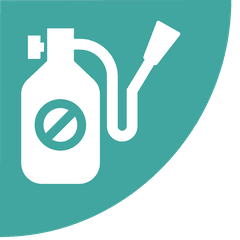NEWSWATCH
PESTICIDES

Report Suggests Measures for Preventing Pesticide-related Risks among Apple Growers
A study of the chemical risks associated with pesticide use in Quebec led researchers from IRSST to suggest measures to improve prevention against pesticide-related risks among apple growers. Growers told IRSST, a nonprofit scientific research organization in Quebec, Canada, that a lack of clear information about the risks of pesticides and the best methods to protect against exposures contribute to workers’ failure to systematically use personal protective equipment. Other factors such as time and financial constraints also affect how PPE is used among apple producers.
“Agricultural producers are on the front line, confronted daily with contradictory objectives: reduce pesticide use, protect the environment, produce perfect apples, be competitive, keep the business running, and preserve their own physical health,” the report reads.
According to IRSST, many exposure situations in agriculture make the use of PPE unavoidable. A variety of aspects in the industry, including site layout, pesticide formulation and packaging, and equipment design, affect workers’ exposures during the mixing and application of pesticide products. Compliance with PPE recommendations, which appear on nearly all pesticide labels in Canada, is intended to guarantee an “acceptable risk.” While these recommendations have the force of law, IRSST’s study found that only a quarter of apple growers consult pesticide product labels for PPE recommendations.
The Pest Management Regulatory Agency, the Canadian federal agency responsible for pesticide regulation, determines what PPE is needed to control exposures of agricultural producers to an acceptable level. Respiratory protective equipment recommended by PMRA must be certified, but dermal protection is described in generic terms. IRSST suggests that in order to avoid the selection of inappropriate protective garments, pesticide labels should clearly identify and better characterize the performance of the recommended PPE for each product. Standardization and improved design of equipment used by growers could also help reduce pesticide exposures, the report concludes.
IRSST’s full report is available
online
.

